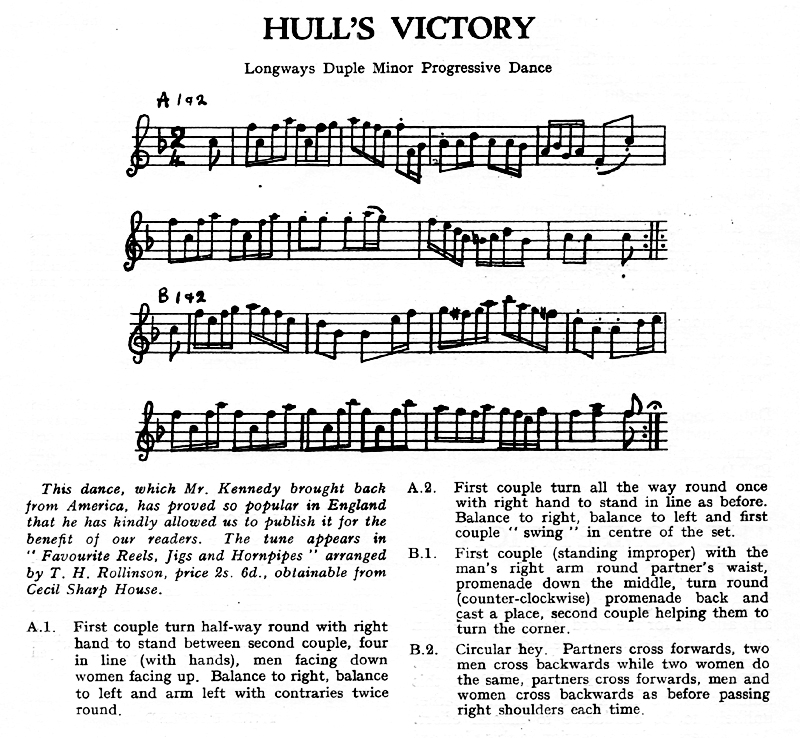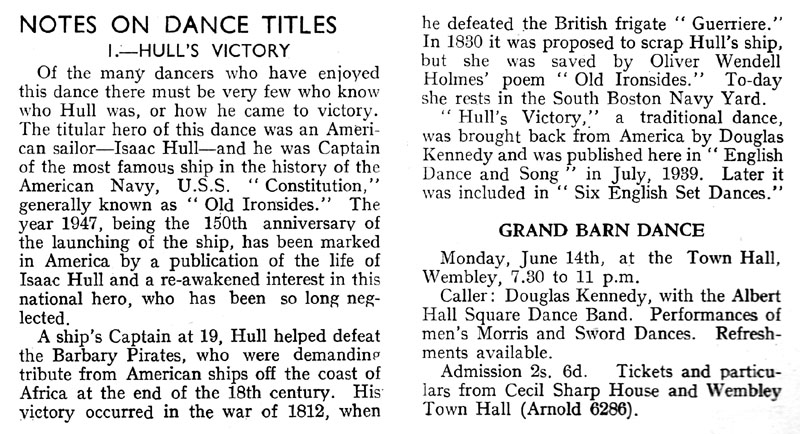Original page from English Dance & Song, July August 1939

Original page from English Dance & Song, May 1948

Back to Dance Index
| A1 |
#1s Allemande Right 1/2 to an Ocean Wave (4) - #2s Separate and Move Up to form the Wave
Balance the Wave (Forward/Back) (4) Neighbour Allemande Left x2 (8) |
| A2 |
#1s Allemande Right to an Ocean Wave (4)
Balance the Wave (F/B) (4) #1 Swing - finish facing Down |
| B1 |
#1s Lead Down the Middle; Turn as a Couple
#1s Lead Up, (Assisted) Cast around the #2s to Second Place |
| B2 | Four Changes (no hands) - walk backwards when passing on the side with same gender Neighbour |
| Older Version | |
| A1 |
#1s Allemande Right 1/2 to an Ocean Wave (4) - #2s Separate and Move Up to form the Wave
Balance the Wave (F/B) (4) Neighbour Allemande Left (once for elegance, twice for excitement) (8) |
| A2 |
#1s Allemande Right 1/2 to an Ocean Wave (4)
Balance the Wave (F/B) (4) Neighbour Allemande Left (x2) |
| B1 |
#1s Lead Down the Middle; Turn Alone
#1s Lead Up, (Assisted) Cast around the #2s to Second Place |
| B2 | Right & Left Four |


I'd love to hear from you if you know anything more about this dance, its composer, its style, or its history.
Feedback is very welcome on any aspect of these dances or Web pages.
Please contact John Sweeney with your comments.
